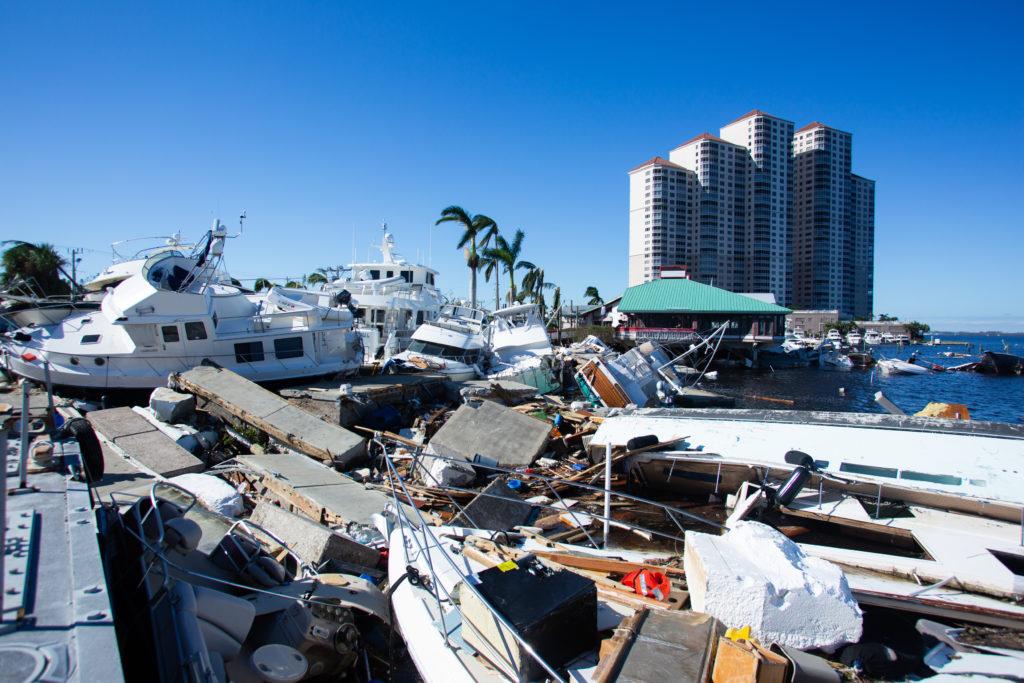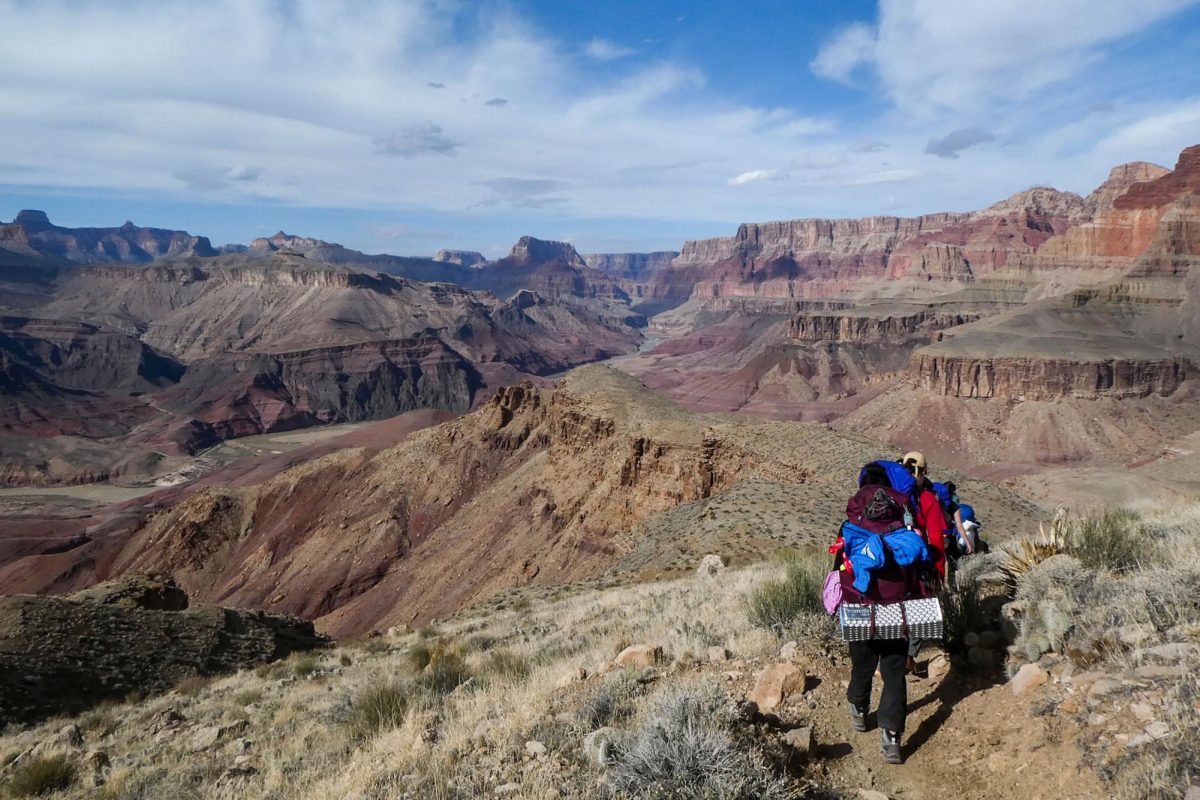When junior Edy Koenigs first saw pictures of her family’s garage ripped away from its foundation and friends’ homes strewn with debris in the wake of Hurricane Ian, she knew her hometown would “not be the same.”
Hurricane Ian, a Category 4 storm, slammed into Florida and tore through Koenig’s neighborhood and dozens more in Lee County late last month. While she pored over photos and videos sent from her hometown, she said childhood memories of cross-country meets and beach trips flooded back when she saw aerial footage of Fort Myers Beach showing ravaged buildings and knocked-down trees.
“You can’t even comprehend it,” Koenigs said. “And I haven’t even been home. I can’t even imagine the effects on my friends who are home, my friends who have seen it.”
As the death toll climbs past 100 and thousands remain without power, students native to the coastal areas ravaged by the hurricane in the Southeast said they have faced stress and anxiety about their loved ones’ safety as communities recover from the storm’s devastation.
[gwh_image id=”1172169″ credit=”Courtesy of Kyle Anderson” align=”none” size=”embedded-img”][/gwh_image]
Koenigs, a native of Cape Coral, Florida, said the high winds of the hurricane tore away her parent’s garage, caused a power outage for more than a week and damaged the gutter and shingles of her sister’s home. She said the “hardest part” of dealing with the storm’s aftermath was seeing pictures of the homes of friends and family in Cape Coral that endured flooding and interior insulation damage after Hurricane Ian passed through.
“Seeing and knowing people impacted, and it actually being a part of your life, and some of those not being rebuilt, some of those being gone forever, is probably the hardest part,” Koenigs said.
Koenigs said her hometown suffered minor damage in comparison to neighboring areas like Fort Myers and Sanibel Island, which were “pounded” by the storm, destroying the Sanibel Causeway that connected Sanibel Island to mainland Florida. She said seeing aerial footage of the devastation in Florida brought her to tears and left her reflecting on the sentimental value of a town home to childhood trips to Dairy Queen, which was likely demolished by the hurricane.
Koenigs said the “surreal” impact of Hurricane Ian has caused additional stress within her daily life after seeing the pictures of damage and speaking to loved ones recovering from the storm – prompting her to skip class, reach out to professors for accommodations and prioritize “being kind” to herself. She said she’s struggled to separate herself from the news of the hurricane’s destruction and heal from the storm’s impact on her hometown due to buzz on campus about the storm.
“With everybody talking about it, and it being something that impacted me, you couldn’t really get away from it,” Koenigs said. “Even if people were doing it with good intentions, it was just the mental impact of your hometown being destroyed by itself and then the impact of you not being able to escape the discussion of it.”
[gwh_image id=”1172171″ credit=”Courtesy of Kyle Anderson” align=”none” size=”embedded-img”][/gwh_image]
Elizabeth Brown, a junior from Sarasota, Florida, said her mind continued to wander back to her hometown throughout the day of the hurricane’s Florida landfall, worrying about her loved ones who sat in the path of a Category 4 storm despite trying to focus on her Capitol Hill internship.
“The day of, I was a wreck,” Brown said. “I was at work – I intern for a Michigan senator – and I’m supposed to be worrying about Michigan, but all I kept doing was tracking the hurricane in Florida and seeing the most recent updates.”
Brown said she has grown accustomed to the “panic” of hurricane warnings after years of living in Florida, so she initially didn’t view Hurricane Ian as a cause for concern until she learned of the severity of the storm and her parents’ choice to not evacuate.
Brown said her parents decided to stay in their home located on the coastal island of Siesta Key instead of crossing the bridge to evacuate inland. She said her parents opted to remain in their house, freshly renovated with a generator, a 12-foot foundation and specialized hurricane glass following 2017’s Hurricane Irma.
“I did feel a bit better knowing our house was a hurricane fortress,” Brown said.
Brown said her family was fortunate to not suffer damage to their home, but buildings and homes in neighboring towns were destroyed. She said the nearby Venice Little Theater on Venice Island, about 15 miles south of Siesta Key – which had sentimental value for Brown, who frequently visited as a child to watch friends perform – was “completely wrecked.”
“It was bare bones,” Brown said. “You could see the light gaffing, and the catwalks were all exposed because the exterior of the building was completely gone. That was one of the more sad updates that I got.”
Florida search and rescue team members have performed 2,500 rescues to date, and the government has restored power to nearly 2.6 million customers across the state, according to a release from Florida Governor Ron DeSantis. The Florida government also worked to provide 12.7 million meals and 45.9 million bottles of water to impacted residents.
[gwh_image id=”1172170″ credit=”Courtesy of Kyle Anderson” align=”none” size=”embedded-img”][/gwh_image]
As the remnants of the hurricane approached the mid-Atlantic, the University sent an email to campus residents late last month with contact information in the event of residence hall flooding or leaks as well as Counseling and Psychological Services resources for students with family members in affected areas.
“I wasn’t there to experience it with the rest of them,” Brown said. “I was living in D.C. over the summer as well. It’s been a while since I’ve been home. It sucks, especially because I haven’t seen it for myself. To go back to my hometown where I grew up and it could be completely different is a little scary.”
Junior Helena Betancourt, a native of San Juan, Puerto Rico, said it was jarring to be away from home while Hurricane Fiona hit her hometown as a Category 4 hurricane last month, a few weeks before Hurricane Ian struck Florida.
Betancourt said she received a personal email from the GW CARE Team in late September after Hurricane Fiona’s landfall in Puerto Rico, detailing support services on standby for students from impacted communities.
“This was my first time having to deal with a hurricane away from home so it definitely did feel like I could have done something,” Betancourt said. “I just didn’t know how to do something from over here.”
Betancourt started her own organization late last month called Re-Cycle, which collects menstrual product donations for hurricane relief in Puerto Rico with funding from the Nashman Center for Civic Engagement and Public Service with students at the University of Puerto Rico. She said the organization focuses its work on raising money to supply residents in affected areas of Puerto Rico with menstrual pads and tampons while they deal with the destruction of the storm.
“We are going to be holding a fundraiser for getting specifically menstrual pads and tampons to communities in the South, which were primarily affected by the hurricane and distributing those products,” Betancourt said. “We haven’t seen a lot of emphasis on that and we just figured these are essential products.”
Betancourt said her family lost water and power before regaining them a few days later, but many areas west and south of Betancourt’s native city of San Juan still don’t have access to power or running water in the aftermath of the hurricane.
“I definitely think that local organizations run by students are doing a lot of helpful efforts like fundraisers but not necessarily the people in positions of power,” Betancourt said.








